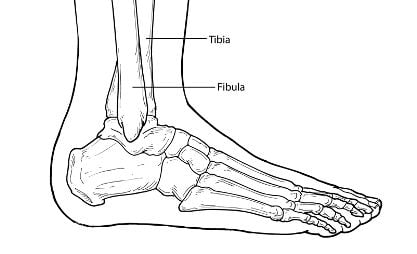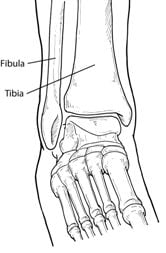SEBASTIAN LOCATION (New Location!)
13852 US Hwy 1
Sebastian, FL 32958
VERO BEACH LOCATION
- AminoFix injection for Plantar Fasciitis & Achilles Tendonitis
- Arch Pain
- Bunions And Bursitis
- Certified Wound Care Specialist
- Comprehensive Foot And Ankle Surgery
- Congenital Foot And Ankle Deformities
- Corns And Calluses
- Diabetic Foot Care
- Flat Feet
- Foot And Ankle Fractures
- Fungal Skin Infections
- Hammertoes
- Laser treatment for fungal nails
- Heel Spurs
- Metatarsal Disorders
- Pediatric Foot And Ankle Problems & Injuries
- Plantar Fasciitis
- Plantar Warts
- Reconstructive Surgery Of The Foot And Ankle
- Sports Related Injuries
- Traumatic Surgery Of The Foot And Ankle
- Treatment Of Charcot Foot And Ankle Deformities
- Treatment Of Ingrown, Fungal And Thickened Nail Conditions
Welcome to the Patient Information Center! Here you will find information about the most common foot and ankle ailments. Click on any of the issues below to find out more about specific problems and what treatment options are available. Here you will also find links to interesting websites pertaining to podiatry. If you have any questions, feel free to Contact Us through the website or give us a call!
Common Ailments
- Achilles Tendon Disorders
- Acute Inflammation
- Ankle Fracture
- Ankle Sprain
- Bunions
- Cavus Foot
- Charcot Foot
- Chronic Ankle Instability
- Crossover Toe
- Diabetic Complications and Amputation Prevention
- Diabetic Foot Care Guidelines
- Diabetic Peripheral Neuropathy
- Equinus
- Flexible Flatfoot
- Fractures of the Fifth Metatarsal
- Ganglion Cyst
- Gout
- Haglund’s Deformity (pump bump)
- Hallux Rigidus
- Hammertoes
- Heel Pain
- Ingrown Toenail
- Lisfranc Injuries
- Malignant Melanoma of the Foot
- Morton’s Neuroma
- Osteoarthritis of the Foot and Ankle
- Pediatric Flatfoot
- Pediatric Heel Pain
- Peroneal Tendon Injuries
- Plantar Fasciitis (Heel Pain)
- Plantar Wart (Verruca Plantaris)
- Posterior Tibial
- Puncture Wounds
- Rheumatoid Arthritis in the Foot and Ankle
- Sesamoid Injuries in the Foot
- Tailor’s Bunion
- Tarsal Coalition
- Tarsal Tunnel Syndrome
- Toe and Metatarsal Fractures
Helpful Information & Links
The path to board certification by the American Board of Podiatric Surgery (ABPS) begins after graduating from an approved podiatric surgical residency program after which our doctors pass a rigorous written examination to become board qualified. Next, doctors spent up to 6 years of their initial practice time collecting various patient cases which demonstrate to the ABPS their decision-making, competency, and skills as a foot and ankle surgeon. After submission of these cases, detailed review, and acceptance to the ABPS, doctors sit for the ABPS oral examination held in Chicago, IL.
- Dr. Paradoa has satisfied requirements by the ABPS to become board certified in Foot, Reconstructive Rearfoot/Ankle Surgery.
Our patients can feel confident that they are being treated by a foot
and ankle surgeon who has dedicated years of her education, training,
and experience to achieving board certification status by the American
Board of Podiatric Surgery.
The American Board of Podiatric Surgery website
has a wealth of information about podiatry and the requirements that
must be met.
A Doctor of Podiatric Medicine (DPM) is to the foot and ankle what a dentist is to the mouth, or an ophthalmologist to the eye — a doctor specializing in the prevention, diagnosis and treatment of foot disorders resulting from injury or disease. A DPM makes independent judgments, prescribes medications and performs surgery. The human foot has a complex interrelation with the rest of the body which means that it may be the first area to show signs of serious conditions such as diabetes and cardiovascular disease. Since the podiatric physician is often the first to detect symptoms of these disorders, he or she becomes a vital and sometimes lifesaving link in the health care team.
The American College of Foot & Ankle Surgeons is a professional society of thousands of foot and ankle surgeons. Their website contains a plethora of information about advances in podiatry and connects its members to share that knowledge.
FootHealthFacts.org is the official consumer website of the American College of Foot and Ankle Surgeons. This is a wonderful resource of information! From what foot injuries Olympians have suffered from during the 2012 London Olympics to a growing trend in lawn mower accidents, you will find interesting, informative and compelling articles in the world of Podiatry.
Patient Forms
Please print and fill out these forms so we can expedite your first visit:
In order to view or print these forms you will need Adobe Acrobat Reader
installed. Click here to download it: 
- Home >
- Articles >
- Bone/Joint/Tendon >
- Fracture >
- Fracture-Ankle
What Is an Ankle Fracture?
A fracture is a partial or complete break in a bone. Fractures in the ankle can range from the less serious avulsion injuries (small pieces of bone that have been pulled off) to severe shattering-type breaks of the tibia, fibula, or both.
Ankle fractures are common injuries that are most often caused by the ankle rolling inward or outward. Many people mistake an ankle fracture for an ankle sprain, but they are quite different and therefore require an accurate and early diagnosis. They sometimes occur simultaneously.
Symptoms
An ankle fracture is accompanied by one or all of these symptoms:
- Pain at the site of the fracture, which in some cases can extend from the foot to the knee
- Significant swelling, which may occur along the length of the leg or may be more localized
- Blisters may occur over the fracture site. These should be promptly treated by a foot and ankle surgeon.
- Bruising that develops soon after the injury
- Inability to walk—however, it is possible to walk with less severe breaks, so never rely on walking as a test of whether a bone has been fractured
- Change in the appearance of the ankle – it will look different from the other ankle
- Bone protruding through the skin—a sign that immediate care is needed. Fractures that pierce the skin require immediate attention because they can lead to severe infection and prolonged recovery.


Diagnosis
Following an ankle injury it is important to have the ankle evaluated by a foot and ankle surgeon for proper diagnosis and treatment. If you are unable to do so right away, go to the emergency room and then follow up with a foot and ankle surgeon as soon as possible for a more thorough assessment.
The affected limb will be examined by the foot and ankle surgeon by touching specific areas to evaluate the injury. In addition, the surgeon may order x-rays and other imaging studies, as necessary.
Non-Surgical Treatment
Treatment of ankle fractures depends upon the type and severity of the injury. At first, the foot and ankle surgeon will want you to follow the R.I.C.E. protocol:
- Rest: Stay off the injured ankle. Walking may cause further injury.
- Ice: Apply an ice pack to the injured area, placing a thin towel between the ice and the skin. Use ice for 20 minutes and then wait at least 40 minutes before icing again.
- Compression: An elastic wrap should be used to control swelling.
- Elevation: The ankle should be raised slightly above the level of your heart to reduce swelling.
Additional treatment options include:
- Immobilization. Certain fractures are treated by protecting and restricting the ankle and foot in a cast or splint. This allows the bone to heal.
- Prescription medications. To help relieve the pain, the surgeon may prescribe pain medications or anti-inflammatory drugs.
When is Surgery Needed?
For some ankle fractures, surgery is needed to repair the fracture and other soft tissue related injuries, if present. The foot and ankle surgeon will select the procedure that is appropriate for your injury.
Follow-up Care
It is important to follow your surgeon’s instructions after treatment. Failure to do so can lead to infection, deformity, arthritis, and chronic pain.
Appointment Request
Our Locations
Find us on the map
Hours of Operation
Our Regular Schedule
Vero Beach Location
Monday:
9:00 AM-5:00 PM
Tuesday:
9:00 AM-5:00 PM
Wednesday:
9:00 AM-5:00 PM
Thursday:
9:00 AM-5:00 PM
Friday:
9:00 AM-12:00 PM
Saturday:
Closed
Sunday:
Closed
Sebastian Location
Monday:
9:00 AM-5:00 PM
Tuesday:
9:00 AM-5:00 PM
Wednesday:
9:00 AM-5:00 PM
Thursday:
9:00 AM-5:00 PM
Friday:
9:00 AM-12:00 PM
Saturday:
Closed
Sunday:
Closed
